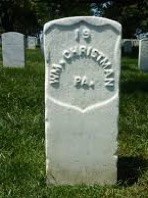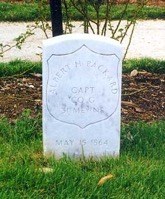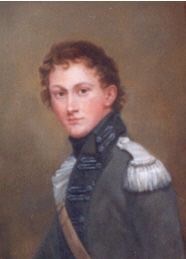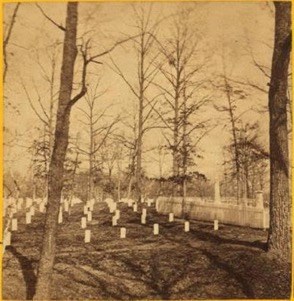
NPS Photo Many visitors to Arlington National Cemetery learn that the first veteran buried at the cemetery was William Christman, an enlisted Union soldier who died on May 11, 1864, in a Washington-area hospital (from the measles). He was buried two days later in present-day Section 27. Other visitors learn that the first US officer to be buried in the cemetery was Capt Albert Packard, on May 15, 1864, in Section 2. And, still others learn that the cemetery includes some US veterans of the War of 1812 and even the American Revolution. Among these are Capt Pierre L’Enfant (d.1825), buried in Section 2, and Gen James Lingan (d.1812), buried in Section 1, both reinterred from other locations. 
NPS Photo In truth, however, none of these veterans was the first to be buried on the cemetery grounds. The first veteran to be buried on the grounds was Lt George Washington Parke Custis. He was commissioned a cornet in the US Army in 1799, and served for more than a year as an aide-de-camp to Gen Charles Cotesworth Pinckney. Later, during the War of 1812, he shouldered a musket and helped man an artillery piece against the British Army at the Battle of Bladensburg during the (unsuccessful) defense of Washington, DC, in 1814. 
Lt Custis, of course, was the grandson of Martha Washington and the step-grandson of the first US President, George Washington. Notably, he was also the father-in-law of Confederate Gen Robert E. Lee. He owned Arlington House and surrounding Arlington Plantation, the sprawling 1,100-acre parcel of land situated along the Potomac River from which was initially carved 200 acres to create a US soldiers’ cemetery in May 1864, at the direction of President Abraham Lincoln and under the supervision of Quartermaster of the Army, Gen Montgomery C. Meigs. Today, Arlington National Cemetery is hallowed ground, the final resting place of over 425 thousand veterans and their spouses, and encompassing more than 600 acres. 
George Washington Parke Custis died at Arlington House on October 10, 1857, at age 76. The Lee family laid him to rest in present-day Section 13, not far from Arlington House and next to his beloved wife, Mary Lee Fitzhugh Custis (d.1853). Judged by early cemetery photos and engravings, the Custis graves were surrounded by a white picket fence (similar to the fence surrounding the mansion flower garden), on a gentle hillside overlooking a natural spring creek running through the extensive woodlands of the upper plantation grounds. A white oak sapling between the two Custis grave monuments was possibly planted by the mourning family. 
NPS Photo Today, visitors to Arlington National Cemetery will find the white picket fence surrounding the Custis graves replaced by a tired-looking wrought iron fence. They will also find the white oak sapling separating the Custis grave monuments has thrived over the last 162 years, so much so that the mature white oak threatens to eventually topple the two tall grave monuments, the final resting place of the truly first veteran and his spouse buried at Arlington National Cemetery. |
Last updated: October 22, 2019
